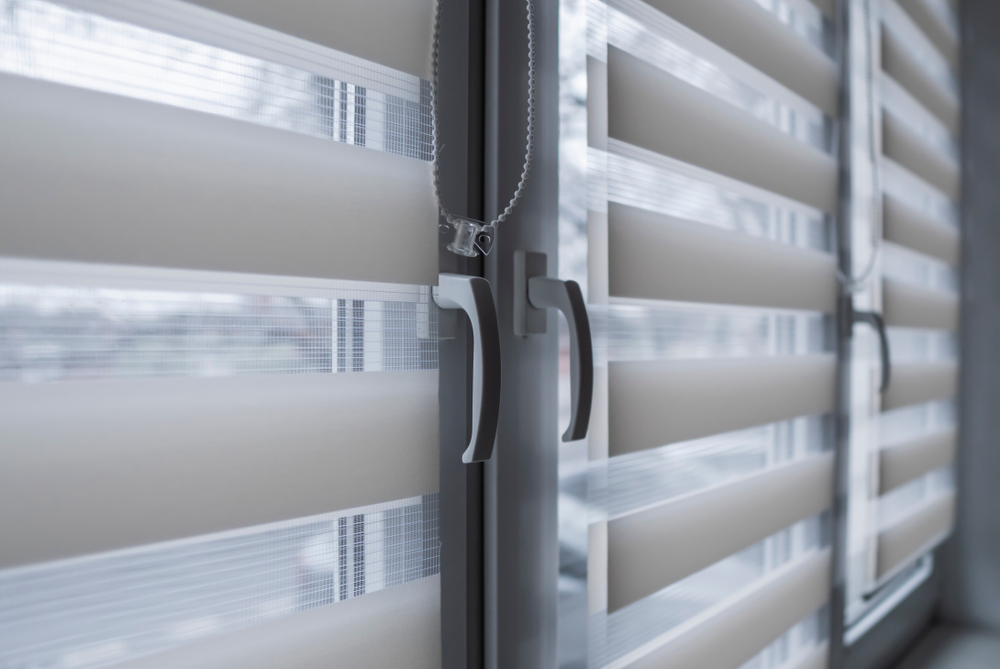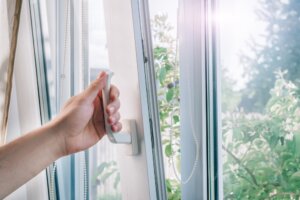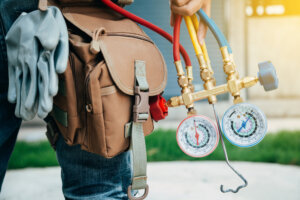It may feel like Old Man Winter is finally loosening his grip – but installing energy-efficient windows will save you money year-round. Simply put, older windows can cause heat loss in winter and heat absorption in summer that increases the cost of air conditioning.
In winter, energy-efficient windows reduce heat loss, air leakage, and create warmer window surfaces that improve comfort and minimize condensation. In summer, low-E coatings on glass windows reduce solar heat gain without darkening the glass. (Low-E or low-emissivity coatings are virtually invisible layers of microscopic metallic oxide on the glass surface that minimize heat transfer through windows.)
To further conserve energy, install white-backed window shades, drapes, or blinds on south- and west-facing windows to reflect summer sunlight back outside the house.
Window Types and Hardware
When shopping for windows it’s helpful to understand all the types of windows that are available, as well as the hardware components of all windows, as shown in this illustration. There are several measures of energy efficiency – the most useful being the U-factor, which measures the rate of heat loss in a window assembly. The lower the U–factor, the greater a window’s resistance to heat flow and the better its insulating properties.
Window Shopping?
If you’re in the market for windows, choosing Energy Star certified models can save you an average of 8% on your energy bills compared to a standard window. And windows that qualify for the new “ENERGY STAR Most Efficient” designation are up to 40% more efficient than a standard window.
There are several energy rebate programs available that will partially offset the cost of buying energy-efficient windows. If you wish to participate, you will need an energy audit done both before and after the installation of new windows. Both audits must be done by a certified energy auditor, who then submits the paperwork required to get your rebates – one to offset the cost of the audits and a rebate for each energy-efficient window or door installed.
Energy-efficient exterior doors require a snug fit and good weather-stripping to prevent drafts and high-insulation core materials. And if you want a glass insert, look for the same multiple-panel, low-e glass you’re getting for your windows.
Windows Can Reduce the ‘Peak Load’ of Your Home
Energy-efficient windows not only provide reduced annual heating and cooling bills, they also reduce the peak load for your home. Peak load is the maximum requirement for heating or cooling at one time, which dictates the size of the furnace, heat pump, air conditioner, and fans that you’ll need. If you reduce the peak load with better windows, you can reduce your investment in this HVAC equipment. There are many benefits to ‘right-sizing’ your HVAC equipment:
- Health and comfort – Smaller HVAC systems run more constantly, which provide better air quality and comfort than larger systems that run sporadically.
- Initial savings – Smaller HVAC units cost less and these savings help offset the cost of better windows.
- Ongoing energy savings – Oversized units will have inefficient stop-and-go cycles; the best system efficiency is realized when HVAC units are sized appropriately.
- Mold prevention – In humid climates, HVAC systems that are more closely matched to peak cooling loads achieve better dehumidification.
Good luck selecting the contractor to install the best energy-efficient windows for your home!
 Our website uses cookies
Our website uses cookies

